Factor Analysis of Packaging Visual Design for Happiness on Organic Food—Middle-Aged and Elderly as an Example
Abstract
:1. Introduction
1.1. Orange Technology
1.2. Happiness Design
1.3. Organic Food Packaging
2. Research Methodology
2.1. The Design of Research Instruments
2.2. Experimental Samples
2.3. Experimental Procedures and Data Processing
2.3.1. Types and Characteristics of Lifestyle Groups of Middle-aged and Senior Citizens
2.3.2. Visual Image Assessment of Happiness Organic Food Packaging
2.3.3. Evaluation of Visual Design Elements for Happiness Organic Food Packaging
2.3.4. Subjects
3. Analysis of Results
3.1. Types and Characteristics of the Lifestyles of the Groups of Middle-aged and Elderly
3.1.1. Cluster Analysis of Lifestyles
- Self-actualization GroupThe “independence and self-confidence”, “hedonism”, and “loyalty to the brand” factors of Cluster 1 are positive, and at the center of the cluster, while the “Caring for Health” factor, the “Lohas and intellectual” factor, and the “willingness to share” factor are negative, and at the center of the cluster. Therefore, this group is named the “self-actualization group”, with a total sample of 41 people, accounting for 17.8%.
- Caring For Health GroupAs shown in Table 7, the “independence and self-confidence” factor, the “Caring for Health” factor, and “Lohas and intellectual” factor of Cluster 2 are positive, and at the center of the cluster, while the “advocacy of food safety” factor, the “hedonism” factor, the “loyalty to the brand” factor, and the “willingness to share” factor are negative, and at the center of the cluster. Therefore, this group is named the “Caring for Health group”, with a total sample of 14 people, accounting for 6.1%.
- Lohas Food Safety GroupThe “advocacy of food safety” factor, the “lohas and intellectual” factor, and “willingness to share” factor of Cluster 3 are positive, and at the center of the cluster, while the “independence and self-confidence” factor, the “Caring for Health” factor, and the “loyalty to the brand” factor are negative, and at the center of the cluster. Therefore, this group is named the “Lohas Food Safety group”, with a total sample of 124 people, accounting for 53.9%.
- Extroverted Loyalty GroupThe “advocacy for food safety” factor, the “loyalty to the brand” factor, and “willingness to share” factor of Cluster 3 are positive, and at the center of the cluster, while the “independence and confidence” factor, the “Caring for Health” factor, the “Lohas and intellectual” factor, and the “hedonism” factor are negative, and at the center of the cluster. Therefore, this group is named the “extroverted loyalty group”, with a total sample of 51 people, accounting for 22.2%.
3.1.2. Analysis of the Relationship between Demographic Variables and Lifestyle Groups
- Cluster 1: Self-actualization GroupThe middle-aged and elderly members of the self- actualization group have an independent character in handling affairs, do not mind the idea of a third party, are sincere in personality, do not defend themselves, and are confident and satisfied with themselves. In terms of shopping, they will not hesitate to buy things they like, as they believe that it is worthwhile to spend money to improve their enjoyment of life and quality of life, and they are willing to spend a higher amount of money on nutritious, natural, and safe foods to protect their health. They are willing and able to improve their living environment, and are very satisfied with their current life.Among them, most are married middle-aged people aged 40 to 49, with university education, and most have a monthly income of over NT $60,000. The service industry is the largest occupation, and most of them have never smoked. They have an exercise frequency of less than two days per week and the eating-out habit of more than five days per week.
- Cluster 2: Caring for Health GroupThe middle-aged and elderly people of the Caring for Health group have the habit of regular health examinations, often pay attention to health-related trends and information, and will share obtained information with their relatives and friends. In addition, they often go to organic or raw food stores to shop. As they are used to reading information or data first, and use such information to determine the value of health, they must carefully read the information, as well as the contents and ingredients related to products, when purchasing food.Among them, most are generally married middle-aged people aged 40 to 44, with senior high school education. Most of them have a monthly income of NT$ 40,000 to NT$ 50,000. The manufacturing and service industry account for the largest occupations, and most of them have never smoked. They have the exercise frequency of less than two days per week and the eating-out habit of more than five days per week.
- Cluster 3: Lohas Food Safety GroupThe middle-aged and elderly people of the Lohas Food Safety group are very concerned about the government’s handling of food safety issues, and pay attention to the relevant certificates, such as the checks and certifications of the quality control responsibility of enterprises for their products. As they are skeptical and afraid of unfamiliar product advertisements, the enterprise and brand image of food companies are the important basis for them to include when judging whether or not to purchase products. Therefore, although they will eat health food regularly to achieve balanced nutrition, when products are recommended or endorsed by nutrition experts or scholars, they will have more confidence in these products. Fresh and natural food is very important; in addition to improving the health of themselves and their families, they believe that eating organic food is to treat earth well and have the concept of environmental protection. They care about the health of themselves and their families, thus, the middle-aged and elderly members of this group will actively learn to make progress both inside and outside themselves, and will always try their best at everything, whether they are good at it or not.This group accounts for 54% of the total sample, are generally women, and the age range is 45 to 54 years old. Most people of this cluster are married, have an education level of mostly university, and most have monthly income above NT$60,000. Most of the occupations in this group are in the service industry, and most never smoked. Most of them have the weekly exercise frequency of less than 2 days, and an eating-out habit of three to five days per week.
- Cluster 4: Extroverted Loyalty GroupThe middle-aged and elderly members of the extroverted loyalty group are accustomed to planning their work and have the same attitude towards shopping, meaning they are good at making purchase lists in advance before shopping. Therefore, in addition to preferring to buy products of the same brand, they also shop around to ensure that they do not spend a higher price than before to buy their usual products. This group is outgoing and not shy with strangers, and can easily chat with new people. Although they eat dinner, they still want to eat snacks, and are happy to meet friends for tea. They like to prepare meals at home, or go out for dinner and enjoy the pleasure of meeting people.There are the same number of men and women in this group, they are generally between 40 and 54 years old, and their education is university. The average monthly income is below NT$ 30,000 to NT$ 50,000, and NT$ 20,000, the most common occupation is service industry, and most have never smoked. Most of them have the weekly exercise frequency of less than two days, and an eating-out habit of more than five days a week.
3.2. Analysis of Happiness Visual Design Elements of Organic Food Packaging for the Middle-aged and Elderly Population
3.2.1. Assessment of Happiness of Lifestyle Groups for Sample Visual Images
- Influential Factors of Happiness in Organic Food Packaging of “Self-actualization Group”, “Lohas Food Safety Group”, and “Extroverted Loyalty Group”The “Self-actualization group”, “Lohas Food Safety group”, and “Extroverted Loyalty Group” think that organic food packaging with the greatest happiness is Sample 7 (Table 13). Sample 7 has a more healing and comfortable design, and its overall packaging base takes yellow and gray as the overall tone, thus, the golden brand name is pressed on the black color block to emphasize the brand, and the pictures of food materials and edible utensils are used as the main vision, which are mainly presented in monochromatic, brilliant, and low color saturations, thus, enabling people to intuitively judge the characteristics of the products. Different cups and saucers are used as a way to identify tastes, which aim at establishing a novel brand image. Based on the above, the sense of happiness that Sample 7 gives the subjects includes being healthy, reassuring, environmentally friendly, healing, comfortable, and novel. As the “Self-actualization Group” is willing to spend money to improve its enjoyment and quality of life, and has the will and ability to improve its living environment, it has a high acceptance for fashionable food packaging. Sample 7’s happiness of health, peace of mind, and environmental protection is in line with the health, food safety, and environmental protection issues, as emphasized by the “Lohas Food Safety Group”. Sample 7 focuses on the main vision of the product’s contents, as supported by the obvious brand name. This typesetting design mode is a theme story with images on the top and bottom, which enables the “Extroverted Loyalty Group” to more intuitively identify conventional brands, products, items, or tastes according to the overall vision, and they prefer to buy goods of the same brand. In order to ensure that their usual goods will not be bought at a higher price, the group will compare the goods with similar goods. This group can easily have a pleasant chat with new people, is happy to meet friends for tea, likes to prepare meals at home or dine out, and enjoys the pleasure of contact with people. Although this group has eaten its main meal, it still wants to eat snacks and is happy to relax while eating.
- Influential Factors of Happiness in Organic Food Packaging of “Caring for Health Group”The “Caring for Health Group” thinks that Sample 2 and Sample 5 are the happiest (Table 13); this group pays attention to physical health, absorbs and shares health-related information from time to time, and likes to go to organic or raw food stores for shopping. When purchasing food, this group carefully reads the information, contents, and ingredients related to the product, in order to understand the health knowledge for good health care. Thus, this group is different from the middle-aged or elderly of other lifestyles, as it takes special care of its own health and disease prevention.Sample 2 has a colorful and bright overall color; the color of the outer package can be directly linked with the agricultural product contents. This brand series of products are in the same design form, accounting for 1:2 and 1:3 of the aspect ratio. Its materials are vertical paste bottom square box packaging and reusable waterproof paper bags.The main vision of Sample 5 uses farmers as the product spokesmen, indicating that the product has a quality assurance person, which makes this group feel safe and comfortable when eating. The packaging color and texture are made of moist and rough waterproof kraft paper, which creates an environment-friendly image of recycled paper. The overall packaging material structure is a single package of vertical soft packaging material with reusable sealing clips, which can reduce the waste of food materials, maintain the freshness of food, and show the food safety factors expected by this group. In addition, the concrete photos of Sample 5’s farmer spokesmen also give the “Caring for Health Group” the happiness of health, peace of mind, and environmental protection.Based on the above, both Sample 2 and Sample 5 use concrete and semi-concrete illustrations and photos as design elements in an attempt to create quality assurance at the source of production and marketing, as well as the naturalness of the place of production, in order that the people in the “Caring for Health Group” have the opportunity to judge the quality of products or choose trusted products themselves.
3.2.2. Analysis of the Differences between Lifestyle Groups and Happiness Design Elements
- Attention of “Self-actualization Group” to Organic Food Packaging Happiness Visual Design ElementsThe “Self-actualization Group” expects happiness organic food packaging to give them positive energy, natural feeling, and considerate design, in order to render them more convenient to eat than other groups; for example, the design of easily torn gaps or the illustration of eating methods. In addition, presenting a good corporate image and doing a good job of fair trade with producers within the enterprise are also the design elements of happiness packaging that this group pays close attention to. Among them, the design elements of happiness organic food packaging that this group pays the most attention to are, from high to low, natural feeling and compliance with fair trade rules, structural packaging and icon design that contain positive energy allows people to conveniently eat, and a good corporate image.
- Attention of “Caring for Health Group” to Organic Food Packaging Happiness Visual Design ElementsThe “Caring for Health Group” expects happiness organic food packaging to have happiness design images or elements, and clean and simple design more than any other group. In addition, good corporate image, product production, and marketing history are also the elements of happiness packaging design that this group pays close attention to. Among them, the elements of happiness organic food packaging design that this group pays most attention to are, from high to low, hollowed-out design that allows people to see the contents of the product, clean and simple designs with attached production and marketing resume, convenient structural packaging and icon design, the word “Organic” displayed on the packaging in Chinese and English, as well as a good corporate image.
- Attention of “Lohas Food Safety Group” to Organic Food Packaging Happiness Visual Design ElementsThe “Lohas Food Safety Group” expects happiness organic food packaging to comply with fair-trade laws, be developed based on the premise of environmental protection, and use recyclable or reusable packaging materials more than other groups. In addition, the hollowed-out packaging design, production, and marketing history that can prove product quality are the design elements of happiness packaging that this group pays attention to. Among them, the elements of the happiness organic food packaging design that this group pays most attention to are, from high to low, the hollowed-out design that allows people see the contents of the product, clean and simple design, attached production and marketing history certificate, the word “organic” is displayed in Chinese and English on the packaging, and uses recyclable or reusable packaging materials.
- Attention of “Extroverted Loyalty Group” to Organic Food Packaging Happiness Visual Design ElementsThe “Extroverted Loyalty Group” expects happiness organic food packaging to have thoughtful design to allow people to eat it more conveniently than other groups; for example, the design of easily torn gaps or an illustration of the eating method. In addition, natural and friendly eating environment and environment-friendly packaging materials are also the design elements of happiness packaging that this group is concerned about. Among them, the design elements of happiness organic food packaging that this group is most concerned about are, in the order of requirements from high to low, smart and thoughtful design to allow people to eat conveniently, creation of overall natural feeling, conformity to good corporate image, and the use of recyclable or reusable packaging materials.
4. Conclusion and Recommendations
4.1. Conclusion
4.2. Recommendations
Author Contributions
Acknowledgments
Conflicts of Interest
References
- Moody’s Investors Service, Inc. Available online: https://www.moodysanalytics.com/ (accessed on 6 February 2014).
- Chou, M.C.; Wang, W.Y. Differences between designers and consumers in comprehending communication designs for food packaging. J. Des. 2007, 12, 21–41. [Google Scholar]
- Lin, S.Y.; Chen, S.F. The content analysis in packaging design and marketing strategy of the senior health foods. J. Healthy Life Success. Aging 2014, 6, 25–42. [Google Scholar]
- Wang, P.N. Package Design; Chwa: New Taipei City, Taiwan, 2015. [Google Scholar]
- Kenya, H. Design of KenyaHara; Seibundo Shinkosha: Tokyo, Japan, 2014. [Google Scholar]
- Hung, Y.M.; Liu, P.C. A Study on Psychology Marker and Association of Application Icons. In Proceedings of the Orange Beneficence—International Design Conference of Smart Living for Elderly, Taiwan, Taipei, 24 November 2013. [Google Scholar]
- Cheng, J.C. A Research on the Design of Eudaimonia Products; National Yunlin University of Science and Technology: Yunlin, Taiwan, 2015. [Google Scholar]
- Desmet, P.M.A. Faces of product pleasure: 25 positive emotions in human-product interactions. J. Des. 2012, 6, 1–29. [Google Scholar]
- DGBAS. Social Indicators 2012; Directorate General of Budget, Accounting and Statistics, Executive Yuan: Taiwan, Taipei, 2013. [Google Scholar]
- Chan, S.H.; Tsai, W.C. Measuring Subjective Well-being; NPF Commentary: Taipei, Taiwan, 2012. [Google Scholar]
- Pieter, M.A.D.; Anna, E.P. Positive design: An introduction to design for subjective well-being. Int. J. Des. 2003, 7, 5–19. [Google Scholar]
- Wang, C.F.; Ouy, Y. The Study of gross national happiness. Sci. Technol. Policy Res. 2015, 509, 36–41. [Google Scholar]
- Tang, H.C. Listen to Tang; Sungoodbook: New Taipei City, Taiwan, 2014. [Google Scholar]
- Ching, J.I. The Influence of Interesting Snack Package Design on Consumers’ Behavior; National Taiwan University of Arts: New Taipei City, Taiwan, 2010. [Google Scholar]
- Tsai, P.C. Evaluation of the Consumer Perception for the Package Design of the Organic Cosmetics; Ming Chuan University: Taipei, Taiwan, 2007. [Google Scholar]
- Lin, P.C.; Chang, C.L. Theoretical foundation for pictogram communication systematization. J. Des. Sci. 2009, 12, 46–69. [Google Scholar]
- Yen, J.; Lin, S.Y. A Study of the Variables of Packaging Design that Affect Brand Equity. J. Des. 2010, 15, 71–91. [Google Scholar]
- Engel, J.F.; Blackwell, R.D.; Miniard, P.W. Consumer Behavior; Dryden Press: Chicago, IL, USA, 1993. [Google Scholar]
- Arnold, K.; Bianchi, C. Relationship marketing, gender and culture: Implications for consumer behavior. Adv. Consum. Res. 2001, 28, 100–105. [Google Scholar]
- Hsu, K.H.; Kung, F.H.; Chang, C.H.; Wang, Y.A. The effect of organic foods cognition and store image on purchase intention—From the points of consumers’ view. J. Sport Health Leis. 2010, 17, 59–70. [Google Scholar]
- Duffy, M.E. Determinants of health promoting lifestyles in older persons. J. Nurs. Scholarship. 1993, 25, 23–28. [Google Scholar] [CrossRef]
- Citation, D.E. Subjective well-being. Psychol. Bull. 1984, 95, 542–575. [Google Scholar]
- Bryła, P. Organic food consumption in Poland: Motives and barriers. Appetite 2016, 105, 737–746. [Google Scholar]
- Lee, K.L.; Chen, J.H.; Yen, J. Construction of five senses design model—An example for foods package design. J. Sci. Technol. 2008, 17, 159–168. [Google Scholar]
- Cresswell, J.W. Research Design: Qualitative, Quantitative, and Mixed Methods; SAGE Publications Ltd.: New York, NY, USA, 2002. [Google Scholar]
- Kawakita, J. Kawakita Jiro Method; Chuokoron-shinsha: Tokyo, Japan, 1986. [Google Scholar]
- Uwe, F. Qualitative Sozialforschung; Rowohlt-Taschenbuch-Verlag: Reinbek bei Hamburg, Germany, 2010. [Google Scholar]
- Wu, M.L. SPSS and the Application and Analysis of Statistics; Book City: New Taipei City, Taiwan, 2013. [Google Scholar]
- Lien, T.C.; Cheng, H.F. The Development of the well-being Scale for Elders in Taiwan. Guid. Q. 2015, 51, 29–37. [Google Scholar]
- Huang, Y.T. The Effects of Product Knowledge, Channel Selection and Organic Certification on Consumer Value Perception and Purchase Intention—A Case of Organic Food in Taiwan; National Cheng Kung University: Tainan, Taiwan, 2013. [Google Scholar]
- Hair, J.F.; Rolph, R.E.; Tatham, L.R.; Black, W.C. Multivariate Data Analysis; Prentice-Hall: Upper Saddle River, NJ, USA, 1998. [Google Scholar]
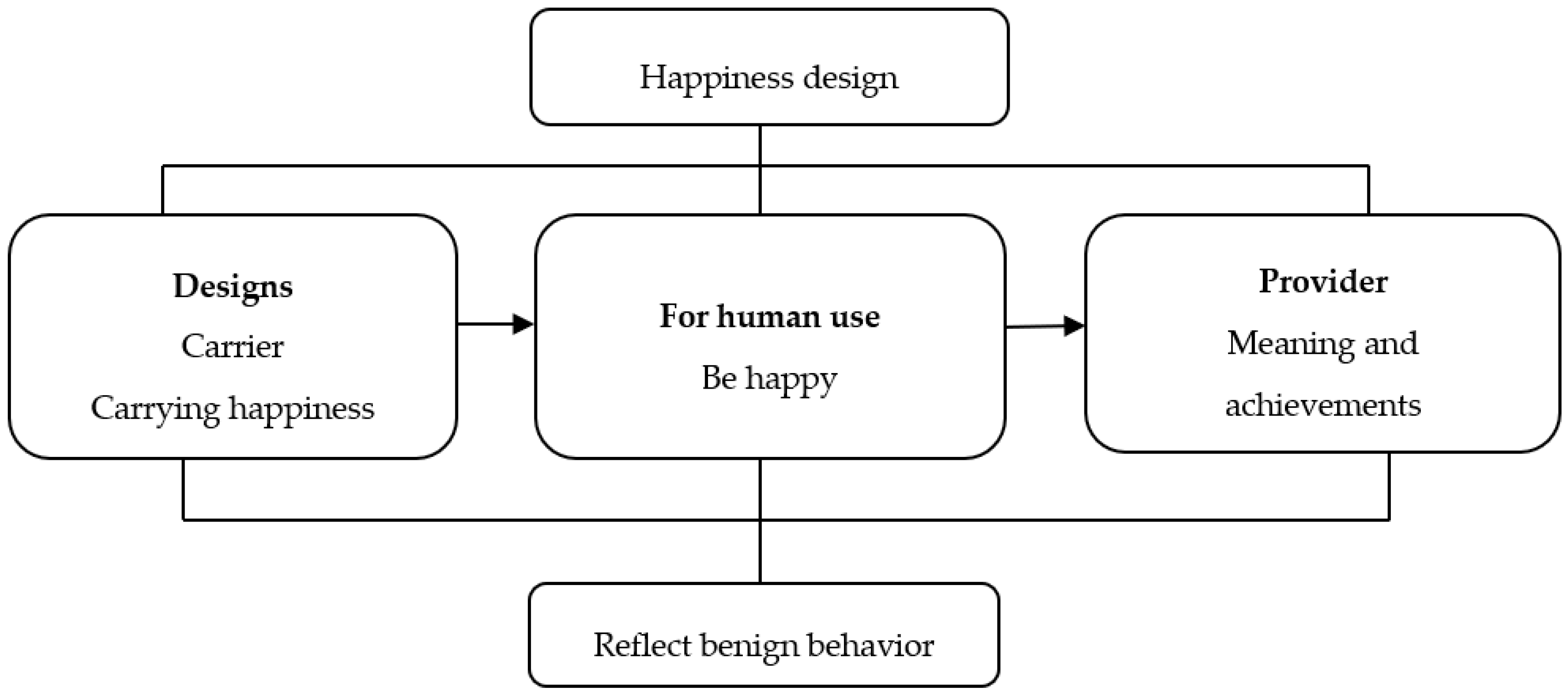

| Interviewees | Employer | Number of Years Working in Design |
|---|---|---|
| Creative Director Wang, B.N. | UP creative | 34 years |
| Creative Director Pan, W. | GIDEA group | Over 10 years |
| Design Director Chen, Q.W. | VORKON | 36 years |
| Design Director Yu, D.G. | 2TIGERS design studio | Over 10 years |
| AIO Dimension | Subdimension | Question |
|---|---|---|
| Activity | Shopping | 1. I often go shopping in organic or raw food stores. 2. I am willing to spend a higher price to buy nutritious, natural, or safe food. 3. I will particularly prefer to buy food or merchandise of the same brand. 4. Before shopping, I will make a list of foods to be purchased in advance. 5. We should shop around to avoid losses in shopping. 6. When I see something I like; I will not hesitate to buy it. |
| Entertainment | 7. In order to improve the enjoyment of life, it is worth spending more money. 8. I only want to rest and relax at home during the holiday. | |
| Hobby | 9. In order to balance the intake of nutrients, I will eat healthcare food regularly. 10. Food brand and advertising image will affect my purchasing behavior. 11. I like to relax at home after work. 12. Although I have eaten dinner, I still want to have snacks. 13. I like to prepare meals with family and friends at home or outside. | |
| Interest | Popular | 14. Eating organic food is an act with the concept of environmental protection. 15. It is very important for me to absorb the latest health-related information. |
| Media | 16. I often provide the latest health information and trends to friends and relatives. 17. I will buy products recommended by nutrition experts or scholars. 18. I doubt the authenticity of the advertisement for a new product. | |
| Achievements | 19. I pay attention to the diet health of my family members and myself. 20. If products are accompanied by production and marketing certification, it can make the company aware of its responsibilities. | |
| Opinion | Self | 21. I have regular health checks. 22. I am satisfied with my current life. 23. I do things with my own mind and do not care much about what others think. 24. I will try my best to do everything best, whether I am good at it or not. 25. I am a cautious person and I have to plan everything. 26. It is easy for me to have a pleasant chat with people I meet for the first time. 27. I will not hesitate in doing things, but will be more decisive. 28. I think people should continue to make progress and study. |
| Products | 29. I do not use prepared food (e.g., frozen food, canned food) when cooking. 30. When buying food, I will read the ingredients of the food carefully. 31. I think the government should be committed to food safety checks. 32. The packaging/appearance of organic food is very attractive to me, so I want to buy it. 33. I attach importance to natural and fresh food. 34. I usually go to a convenience store or supermarket where I can buy food through a fast shopping channel. |
| Dimension | Question |
|---|---|
| Meaning and Design Image | 1. Happiness organic food packaging needs to give people positive energy. |
| 2. Happiness organic food packaging needs to be carefully perceived and read. | |
| 3. Happiness organic food packaging needs to resonate with my memory. | |
| 4. Happiness organic food packaging needs the effect of calming the nerves. | |
| 5. Happiness organic food packaging needs a design image or element that requires blessing (e.g., apple with the same sound for being safe and harmonious in Chinese) | |
| 6. Happiness organic food packaging needs to join the cultural elements of faith (such as auspicious clouds and other happy totems.) | |
| Creation of Visual Situation | 7. Happiness organic food packaging needs a natural feeling. |
| 8. Happiness organic food packaging needs a happy image of reunion. | |
| 9. Happiness organic food packaging needs to create a pleasant visual situation. | |
| Design Image and Skills | 10. Happiness organic food packaging needs to be transparent to let me see the product. |
| 11. Happiness organic food packaging needs to have the words “organic”, etc., in English and Chinese. | |
| 12. Happiness organic food packaging needs to have a clean and simple design. | |
| 13. Happiness organic food packaging needs bright colors to show freshness. | |
| 14. Happiness organic food packaging needs a small, intimate design that is easy to use (e.g., easy-to-tear gap design, an illustration of the method of eating the food). | |
| Corporate Culture and Brand Certification | 15. Happiness organic food packaging needs a good corporate image. |
| 16. Happiness organic food packaging needs to have a production and sales resume | |
| 17. Happiness organic food packaging needs to be in line with fair trade rules. | |
| 18. Happiness organic food packaging needs to be developed based on environmental premises. | |
| 19. Happiness organic food packaging needs to be recyclable or reusable. |
| Representative Samples | |||||||||
|---|---|---|---|---|---|---|---|---|---|
| 1 | 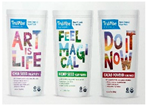 | 2 |  | 3 |  | 4 |  | 5 | 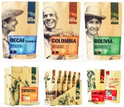 |
| A white background portrays young style | Bright color illustration style | Simple and warm style | Fresh bionic style | Portrait situation style | |||||
| 6 | 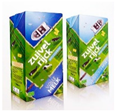 | 7 | 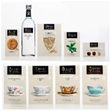 | 8 |  | 9 |  | 10 |  |
| Interesting interaction style | Elegant culture style | Transparent fresh style | No color imitation quality | Epoch science, and technology style | |||||
| Adjective Pairs | |||||
|---|---|---|---|---|---|
| 1. | Healing-Melancholy | 2. | Healthy-Harmful | 3. | Comfortable-Nervous |
| 4. | Professional-Amateur | 5. | Unadorned-Pretentious | 6. | Non-toxic-Toxic |
| 7. | Ease of mind-Uneasy | 8. | Environmentally friendly-Polluting | 9. | Novel-Traditional |
| Factor Name | Question Items | Explained Variance% | Cumulative Explained Variance% | Factor Loading |
|---|---|---|---|---|
| Advocacy of food | 31. I think the government should be committed to food safety checks. | 12.257 | 12.257 | 0.728 |
| 20. If products are accompanied by production and marketing certification, it can make the company aware of its responsibilities. | 0.704 | |||
| 28. I think people should continue to make progress and study. | 0.658 | |||
| 33. I attach importance to natural and fresh food. | 0.622 | |||
| 19. I pay attention to the diet health of my family members and myself. | 0.520 | |||
| 24. I will try my best to do everything best, whether I am good at it or not. | 0.492 | |||
| 18. I doubt the authenticity of the advertisement for a new product. | 0.409 | |||
| Safety independence and self-confidence | 27. I will not hesitate in doing things, but will be more decisive. | 8.041 | 20.568 | 0.743 |
| 23. I do things with my own mind and do not care much about what others think. | 0.735 | |||
| 22. I am satisfied with my current life. | 0.507 | |||
| Caring for Health | 21. I have regular health checks. | 8.618 | 29.186 | 0.694 |
| 16. I often provide the latest health information and trends to friends and relatives. | 0.677 | |||
| 1. I often go shopping in organic or raw food stores. | 0.485 | |||
| 15. It is very important for me to absorb the latest health-related information. | 0.484 | |||
| 30. When buying food, I will read the ingredients of the food carefully. | 0.409 | |||
| Lohas and intellectual | 17. I will buy products recommended by nutrition experts or scholars. | 7.870 | 37.056 | 0.768 |
| 9. In order to balance the intake of nutrients, I will eat healthcare food regularly. | 0.657 | |||
| 10. Food brand and advertising image will affect my purchasing behavior. | 0.475 | |||
| 14. Eating organic food is an act with the concept of environmental protection. | 0.433 | |||
| Hedonism | 2. I am willing to spend a higher price to buy nutritious, natural, or safe food. | 7.041 | 44.097 | 0.709 |
| 7. In order to improve the enjoyment of life, it is worth spending more money. | 0.625 | |||
| 6. When I see something I like; I will not hesitate to buy it. | 0.461 | |||
| Loyalty to the brand | 4. Before shopping, I will make a list of foods to be purchased in advance. | 7.231 | 51.328 | 0.705 |
| 5. We should shop around to avoid losses in shopping. | 0.692 | |||
| 25. I am a cautious person and I have to plan everything. | 0.557 | |||
| 3. I will particularly prefer to buy food or merchandise of the same brand. | 0.476 | |||
| Willingness to share | 13. I like to prepare meals with family and friends at home or outside. | 5.580 | 56.908 | 0.631 |
| 12. Although I have eaten dinner, I still want to have snacks. | 0.585 | |||
| 26. It is easy for me to have a pleasant chat with people I meet for the first time. | 0.536 |
| Factor Dimension | Cluster 1 | Cluster 2 | Cluster 3 | Cluster 4 | F value | P value |
|---|---|---|---|---|---|---|
| Advocacy of food Safety | 0.43214 | –5.57825 | 0.96627 | 0.59369 | 41.771 | 0.000 |
| Independence and self-confidence | 2.18873 | 0.29824 | –2.70277 | –1.97807 | 4.025 | 0.008 |
| Caring for health | –3.25763 | 1.58035 | –0.14538 | –0.38747 | 22.216 | 0.000 |
| Lohas and intellectual | –1.27756 | 0.11547 | 0.60362 | –2.92475 | 40.526 | 0.000 |
| Hedonism | 2.96468 | –0.90702 | –0.72083 | –1.61009 | 29.633 | 0.000 |
| Loyalty to the brand | 1.12061 | –0.50796 | –2.18423 | 3.29353 | 15.672 | 0.000 |
| Willingness to share | –1.33518 | –2.14488 | 1.32178 | 2.46788 | 3.675 | 0.013 |
| Cluster | Sample | Percentage |
|---|---|---|
| Cluster 1—Self-actualization Group | 41 | 17.8 |
| Cluster 2—Caring For Health Group | 14 | 6.1 |
| Cluster 3—Lohas Food Safety Group | 124 | 53.9 |
| Cluster 4—Extroverted Loyalty Group | 51 | 22.2 |
| Total | 230 | 100 |
| Cluster | Gender | Age | Education | Marital Status | |||||||||||
|---|---|---|---|---|---|---|---|---|---|---|---|---|---|---|---|
| Male | Female | 40–44 | 45–49 | 50–54 | 55–59 | 60–64 | 65+ | Junior High School | Senior High School | University | Master | Doctor | Single | Married | |
| Cluster 1—Self-actualization Group | 7.8 | 10 | 6.5 | 6.1 | 3.5 | 0.9 | 0.9 | 0 | 1.3 | 4.8 | 9.1 | 2.6 | 0 | 3 | 14.8 |
| Cluster 2—Caring For Health Group | 3.9 | 2.2 | 3.9 | 0.9 | 0.9 | 0.4 | 0 | 0 | 0.4 | 3 | 1.7 | 0.4 | 0.4 | 1.3 | 4.8 |
| Cluster 3—Lohas Food Safety Group | 22.6 | 31.3 | 12.6 | 18.3 | 16.1 | 5.2 | 1.7 | 0 | 2.2 | 11.3 | 30.4 | 9.6 | 0.4 | 8.7 | 45.2 |
| Cluster 4—Extroverted Loyalty Group | 10.9 | 11.3 | 6.5 | 6.5 | 5.2 | 2.2 | 1.3 | 0.4 | 1.7 | 7 | 10.9 | 1.7 | 0.9 | 3 | 5.7 |
| Cluster | Occupation | Monthly Income | Place of Living | ||||||||||
|---|---|---|---|---|---|---|---|---|---|---|---|---|---|
| Manufacturing | Service Industry | Public Servant Industry | Between Jobs/Retire | <NT 20000 | NT20000–NT30000 | NT30000–NT40000 | NT40000–NT50000 | NT50000–NT60000 | NT60000+ | North | Middle | South | |
| Cluster 1—Self-actualization Group | 4.4 | 8.3 | 2.6 | 2.6 | 0.4 | 2.1 | 3.5 | 3 | 3 | 5.7 | 5.7 | 2.6 | 9.6 |
| Cluster 2—Caring For Health Group | 2.2 | 2.2 | 1.7 | 0 | 1.3 | 0.4 | 0.9 | 1.7 | 0.4 | 1.3 | 1.3 | 2.2 | 2.6 |
| Cluster 3—Lohas Food Safety Group | 12.6 | 25.2 | 9.6 | 6.5 | 6.5 | 6.1 | 8.7 | 7 | 9.1 | 16.5 | 20.4 | 9.6 | 23.9 |
| Cluster 4—Extroverted Loyalty Group | 5.7 | 7.8 | 5.7 | 3.0 | 4.6 | 3.5 | 4.3 | 4.3 | 2.1 | 3.5 | 8.7 | 4.8 | 8.7 |
| Cluster | Smoking | Weekly Exercise | Weekly Eating-Out | |||||||||
|---|---|---|---|---|---|---|---|---|---|---|---|---|
| Never | Occasionally | Frequently | Always | <2 Days | 3–4 Days | 5–6 Days | 7 Days | Hardly Ever | 1–2 Days | 3–4 Days | 5 Days+ | |
| Cluster 1—Self-actualization Group | 13 | 1.3 | 0 | 3.5 | 13.5 | 3.5 | 0.4 | 0.4 | 0.4 | 5.2 | 4.8 | 7.4 |
| Cluster 2—Caring For Health Group | 3.5 | 0.9 | 0 | 1.7 | 3.5 | 1.7 | 0 | 0.8 | 0.4 | 1.3 | 1.3 | 3 |
| Cluster 3—Lohas Food Safety Group | 43.5 | 1.7 | 2.2 | 7 | 33 | 12.6 | 5.7 | 2.6 | 3.5 | 14.3 | 16 | 20 |
| Cluster 4—Extroverted Loyalty Group | 17.8 | 0.9 | 0 | 3 | 13.5 | 6.5 | 6.5 | 1.3 | 3 | 6.5 | 3.9 | 8.7 |
| Image Analysis Chart | Cluster 1 | Cluster 2 | Cluster 3 | Cluster 4 | ||
| Average | 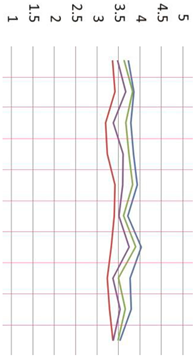 | |||||
| Sample | ||||||
| sample 1 | 3.73(8) | 3.36(4) | 3.62(6) | 3.48(7) | ||
| sample 2 | 3.86(3) | 3.42(1) | 3.82(2) | 3.67(2) | ||
| sample 3 | 3.79(6) | 3.20(8) | 3.66(4) | 3.38(8) | ||
| sample 4 | 3.85(4) | 3.24(7) | 3.73(3) | 3.61(3) | ||
| sample 5 | 3.94(2) | 3.42(1) | 3.82(2) | 3.60(4) | ||
| sample 6 | 3.72(9) | 3.40(2) | 3.61(7) | 3.51(6) | ||
| sample 7 | 4.03(1) | 3.33(5) | 3.89(1) | 3.75(1) | ||
| sample 8 | 3.77(7) | 3.24(7) | 3.49(8) | 3.37(9) | ||
| sample 9 | 3.80(5) | 3.29(6) | 3.65(5) | 3.54(5) | ||
| sample 10 | 3.54(10) | 3.37(3) | 3.48(9) | 3.38(8) | ||
 | ||||||
| Sample |  | 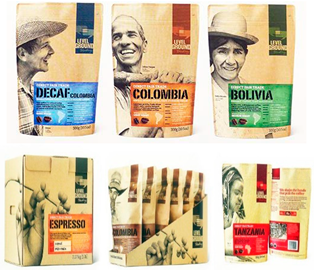 | |
| Item No. | Sample 2 | Sample 5 | |
| Cluster | Cluster 2, Cluster 4 | Cluster 1, Cluster 2, Cluster 3 | |
| Visual image vocabulary | Healthy, comfortable, and professional. | Healthy, reassuring, and environmentally friendly. | |
| Features | color | The overall color is colorful and bright, and the outer package color can be directly connected with the contents. | The appearance is based on a coffee color and supplemented by monochromatic color blocks, and the main purpose of the overall package color is to display food information. |
| Text | The white Century Gothic font is used as the basic structure for modification. | This font uses the structure of an orthodox black body as a template with fine-tuning and change. | |
| Graphics | Illustrated semi-figurative agricultural products and livestock are the main vision, | Uses black and white images of the producers at the bottom of the package. | |
| Arrangement | The heading, subheading, and main vision are presented in a ratio of 1:2 or 1:3. | The layout is rectangular and the overall reading guidance has three key messages. | |
| Structural modeling | Horizontal paste bottom square box packaging and waterproof paper bag. | The single package is a vertical soft package with a sealing clip. | |
| Material | Cardboard box or greaseproof paper. | Waterproof kraft paper. | |
| Sample | 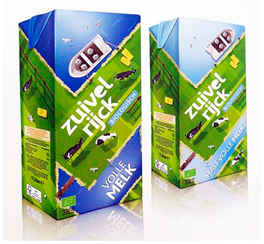 | 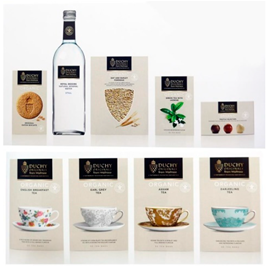 | |
| Item No. | Sample 6 | Sample 7 | |
| Cluster | Cluster 2 | Cluster 1, Cluster 3, Cluster 4 | |
| Visual image vocabulary | Healthy, comfortable, and professional. | Healing, comfortable, and professional. | |
| Features | color | The overall color is colorful and bright, and the outer package color is based on blue and green. | The overall package color is based on yellow and gray, and supplemented by black color blocks, where the main purpose is to display the brand. |
| Text | The white font is used as the basic structure for modification. | The structure of the golden Kozuka Mincho Pr6N B font is used as a template with fine-tune and change. | |
| Graphics | Illustrated design and dairy farming are the main vision, | The main vision uses solid material and elegant cup photos at the center of the package. | |
| Arrangement | The heading, subheading, and main vision are presented in Illustrated design. | The layout is rectangular and the overall reading guidance has four key messages. | |
| Structural modeling | Vertical paste bottom square box packaging. | Vertical paste bottom square box packaging, and a reusable glass bottle. | |
| Material | Polyethylene, Cardboard box. | Cardboard box. | |
| Question Items | Cluster 1 | Cluster 2 | Cluster 3 | Cluster 4 | F-Test | P-Value |
|---|---|---|---|---|---|---|
| 1. Happiness organic food packaging needs to give people positive energy. | 4.41(2) | 3.50(6) | 4.29(6) | 4.10(5) | 8.765 | 0.000 |
| 2. Happiness organic food packaging needs to be carefully perceived and read. | 4.05(8) | 3.57(5) | 4.06(12) | 3.90(9) | 2.250 | 0.083 |
| 3. Happiness organic food packaging needs to resonate with my memory. | 4.17(7) | 3.36(8) | 4.07(11) | 3.88(10) | 5.204 | 0.002 |
| 4. Happiness organic food packaging needs the effect of calming the nerves. | 4.34(4) | 3.57(5) | 4.12(10) | 3.94(8) | 5.177 | 0.002 |
| 5. Happiness organic food packaging needs a design image or element that requires blessing. (e.g., apple with the same sound for being safe and harmonious in Chinese) | 3.90(11) | 3.21(10) | 3.69(16) | 3.53(13) | 2.668 | 0.049 |
| 6. Happiness organic food packaging needs to join the cultural elements of faith. (such as auspicious clouds and other happy totems.) | 3.24(13) | 3.29(9) | 3.17(17) | 2.98(15) | 0.690 | 0.559 |
| 7. Happiness organic food packaging needs a natural feeling. | 4.44(1) | 3.57(5) | 4.31(5) | 4.22(2) | 5.880 | 0.001 |
| 8. Happiness organic food packaging needs a happy image of reunion. | 3.73(12) | 3.36(8) | 3.70(15) | 3.57(12) | 1.118 | 0.343 |
| 9. Happiness organic food packaging needs to create a pleasant visual situation. | 4.34(4) | 3.36(8) | 4.23(8) | 4.08(6) | 7.719 | 0.000 |
| 10. Happiness organic food packaging needs to be transparent to let me see the product. | 4.02(9) | 3.86(1) | 3.95(13) | 3.86(11) | 0.337 | 0.799 |
| 11. Happiness organic food packaging needs to have the words “organic”, etc., in English and Chinese. | 4.00(10) | 3.71(3) | 3.94(14) | 3.86(11) | 0.481 | 0.696 |
| 12. Happiness organic food packaging needs to have a clean and simple design. | 4.34(4) | 3.79(2) | 4.23(8) | 4.06(7) | 2.854 | 0.038 |
| 13. Happiness organic food packaging needs bright colors to show freshness. | 3.22(14) | 3.07(11) | 3.14(18) | 3.22(14) | 0.158 | 0.925 |
| 14. Happiness organic food packaging needs a small, intimate design that is easy to use (e.g., easy-to-tear gap design, an illustration of the method of eating the food). | 4.41(2) | 3.71(3) | 4.16(9) | 4.24(1) | 4.233 | 0.006 |
| 15. Happiness organic food packaging needs a good corporate image. | 4.37(3) | 3.71(3) | 4.25(7) | 4.16(4) | 2.934 | 0.034 |
| 16. Happiness organic food packaging needs to have a production and sales resume. | 4.34(4) | 3.79(2) | 4.36(4) | 4.08(6) | 4.098 | 0.007 |
| 17. Happiness organic food packaging needs to be in line with fair trade rules. | 4.44(1) | 3.64(4) | 4.41(1) | 4.20(3) | 6.303 | 0.000 |
| 18. Happiness organic food packaging needs to be developed based on environmental premises. | 4.29(5) | 3.43(7) | 4.38(3) | 4.16(4) | 7.683 | 0.000 |
| 19. Happiness organic food packaging needs to be recyclable or reusable. | 4.22(6) | 3.71(3) | 4.40(2) | 4.20(3) | 3.798 | 0.011 |
© 2019 by the authors. Licensee MDPI, Basel, Switzerland. This article is an open access article distributed under the terms and conditions of the Creative Commons Attribution (CC BY) license (http://creativecommons.org/licenses/by/4.0/).
Share and Cite
Tu, J.-C.; Chang, H.-T.; Chen, S.-B. Factor Analysis of Packaging Visual Design for Happiness on Organic Food—Middle-Aged and Elderly as an Example. Sustainability 2019, 11, 3267. https://doi.org/10.3390/su11123267
Tu J-C, Chang H-T, Chen S-B. Factor Analysis of Packaging Visual Design for Happiness on Organic Food—Middle-Aged and Elderly as an Example. Sustainability. 2019; 11(12):3267. https://doi.org/10.3390/su11123267
Chicago/Turabian StyleTu, Jui-Che, Hsing-Tzu Chang, and Shu-Bei Chen. 2019. "Factor Analysis of Packaging Visual Design for Happiness on Organic Food—Middle-Aged and Elderly as an Example" Sustainability 11, no. 12: 3267. https://doi.org/10.3390/su11123267
APA StyleTu, J.-C., Chang, H.-T., & Chen, S.-B. (2019). Factor Analysis of Packaging Visual Design for Happiness on Organic Food—Middle-Aged and Elderly as an Example. Sustainability, 11(12), 3267. https://doi.org/10.3390/su11123267





